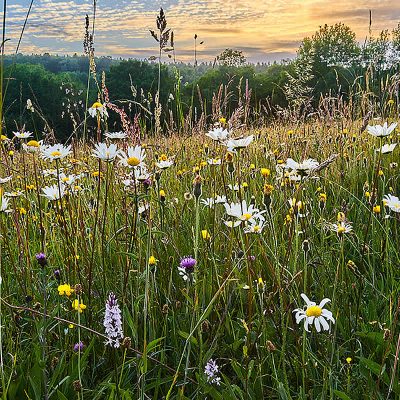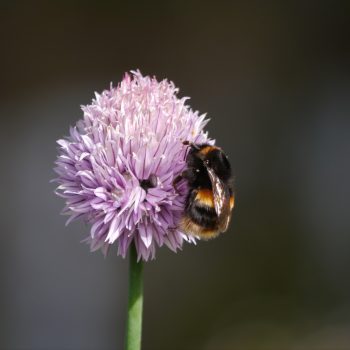The Wonder Weed: Why Yellow Rattle is Essential for Wildflower Meadows & Gardens
Hey there, wildflower lovers and meadow makers. Have you heard of yellow rattle? Also known as hay rattle, rattle grass or rattle weed, this little annual plant is your secret weapon for creating a gorgeous wildflower meadow. Yellow rattle is nature’s meadow maker. Once established, it helps control those pushy grasses that like to take over, giving your wildflowers a chance to thrive. By weakening the grass roots, the yellow rattle creates space and opportunities for a dazzling display of native blooms. The best part is you can source yellow rattle seed locally, supporting your regional biodiversity. So if you want to grow a meadow that will make your neighbours green with envy, yellow rattle is the wonder weed you need.
What is Yellow Rattle and Why is it Called the Wonder Weed?
Yellow rattle, also known as rattlebox or hay rattle, is a wildflower known for its ability to dominate grasslands. This annual weed gets its name from the rattling sound of dried seed pods. But don’t let its weed status fool you – yellow rattle is essential for creating wildflower meadows and pastures.
- It weakens grass growth. Yellow rattle is semi-parasitic, attaching to the roots of grasses and reducing their vigour. This allows wildflowers and other plants to establish themselves in the open spaces.
- It provides food for pollinators. The yellow flowers bloom from June through August and are an essential nectar and pollen source for bees, butterflies, and other beneficial insects.
- It supports biodiversity. By suppressing competitive grasses, yellow rattle creates opportunities for a greater variety of wildflowers, herbs, and other plants to thrive. This, in turn, attracts more wildlife and improves the ecosystem’s overall health.
- It’s low-maintenance. Once yellow rattle has weakened the grasses, it will eventually reduce its population, allowing the wildflowers and meadow plants to dominate. At this point, minimal mowing or disturbance is needed.
Using locally-sourced yellow rattle seed when creating a wildflower meadow or pasture helps ensure you get a species well-adapted to your region. It may take a few years for the yellow rattle to become fully established, but this wonder weed is well worth the wait for its natural ability to pave the way for a gorgeous, diverse meadow that supports wildlife and pollinators. Truly a must-have for any gardener wanting to take a natural approach!
The Many Names of Yellow Rattle: Haymaker, Penny Grass, and More
This vibrant yellow wildflower goes by many names. You may know it as yellow rattle, haymaker, penny grass, or corn marigold. No matter what you call it, this native annual is essential for creating wildflower meadows and pastures.
Yellow rattle is a hemiparasitic plant, meaning it gets some nutrients from the roots of surrounding grasses and herbs. This helps naturally control vigorous grasses that would otherwise outcompete wildflowers. The seeds are also an important winter food source for some bird species.
To establish yellow rattle in your meadow, source seeds locally. This will provide plants well-adapted to your climate and help support your local ecosystem. In early spring, scatter the seeds on bare or lightly tilled soil before your central wildflower mix. The yellow rattle will germinate first, then your wildflowers will follow.
By midsummer, yellow rattle will be blooming and setting seed. Collect some of the seed to reseed in your meadow for years to come. The rattling sound the seeds make in the ripening seed pods gives this annual its distinctive name.
With the right conditions, yellow rattle will self-seed and spread independently over time. But collecting and reseeding a portion of your harvest will help ensure this beneficial wildflower remains a vibrant part of your meadow community for generations. Its ability to enhance biodiversity while reducing maintenance makes yellow rattle a wonder weed worth welcoming.
How Yellow Rattle Benefits Wildflower Meadows and Native Plant Communities
Controlling Invasive Species
Yellow rattle acts as a natural weed suppressor, helping to control invasive plants that can take over meadows and wildflower areas. By parasitizing the roots of grasses like ryegrass, fescue, and bluegrass, yellow rattle weakens them and stunts their growth so wildflowers have a chance to establish themselves. This allows native flowers to flourish where they otherwise might not due to competition from these aggressive grass species.
Improving Biodiversity
By curbing the spread of rapidly growing grasses, yellow rattle creates space for various wildflowers to grow. This results in a considerable boost in biodiversity, attracting bees, butterflies, and other beneficial pollinators. A single yellow rattle plant can support up to 35 different insect species.
Using yellow rattle as a biocontrol method is a sustainable way to manage grasslands and meadows.
Rather than relying on herbicides, mowing, or tilling, which can damage the environment, yellow rattle naturally and organically controls grass overgrowth at no cost. It is a self-sustaining solution that requires minimal input to establish.

- Once introduced, yellow rattle readily reseeds itself each year, spreading to new meadow areas.
- It does not need to be re-sown annually like some wildflower mixes.
- After the initial sowing, the only management needed is an annual cut in late summer to allow the seeds to ripen and drop.
By employing nature’s balancing mechanisms, yellow rattle helps create healthy, diverse plant communities and wildlife habitats—no wonder this unassuming little flower has earned such an important role in grassland conservation and restoration.
Why Locally Sourced Yellow Rattle Seed Matters
Locally Sourced Means Native Genetics
When you source yellow rattle seeds local to your area, you get seeds well-adapted to your climate and soil conditions. The plants will thrive much more readily since they evolved in similar surroundings. The seed that originates from a different region may not germinate as well or produce vigorous plants.

Benefits for Local Wildlife
Native insects and pollinators in your area have co-evolved with your local yellow rattle populations.
The plant provides habitat and food sources these beneficial creatures need to survive. When you plant yellow rattle from local seed stock, you’re helping to sustain biodiversity in your community by providing essential resources for native wildlife.
Preservation of Regional Diversity
Many naturally-occurring varieties of yellow rattle have developed regionally over time. These ecotypes are uniquely suited to the environment in the areas where they originate. Planting locally-sourced seeds helps ensure these regional varieties and the valuable traits they’ve adapted are preserved for the future. As habitats change, this genetic diversity may be crucial for the long-term survival of the species.
Community Conservation
Sourcing seeds locally also supports your area’s small farmers and grassroots conservation efforts. Many cottage nurseries harvest and sell native seeds to fund projects that protect the community’s biodiversity and natural landscapes. When you buy from them, you’re directly supporting their essential work. Some also donate a portion of proceeds to local conservation organizations and wildlife refuges.
Using yellow rattle seed native to your region provides many benefits beyond establishing a wildflower meadow. You’re actively sustaining the local environment, native wildlife, and community conservation and creating a space where natural and cultural heritage are preserved together.
How to Establish and Maintain a Wildflower Meadow with Yellow Rattle
Establishing a wildflower meadow using yellow rattle is easy and rewarding. This native annual helps create ideal conditions for wildflowers to thrive.
Prepare the Site
Choose an open, sunny site with well-drained soil. Mow or cut the existing vegetation down to about 6 inches high. Rake up and remove the clippings. This will reduce competition for your wildflower and yellow rattle seeds.
Sow the Seeds
In early fall, sow yellow rattle seeds at a rate of about 1 ounce per 100 square feet. Bury the tiny seeds no more than 1/4 inch deep. You can also sow wildflower seeds simultaneously for a diverse meadow. Or sow wildflowers the following season once the yellow rattle has worked.
Maintenance
Yellow rattle will germinate in fall and overwinter as rosettes. It will increase in spring, producing delicate purple and yellow flowers in late spring. Once flowering is done, the plant dies back.
- Mow the meadow in late fall or early spring to a height of about 6 to 8 inches. This will distribute the yellow rattle seeds for next season and open the canopy.
- Repeat mowing for the first few years in early spring before new growth starts. After that, mowing once every 2-3 years in the autumn is typically enough.
- Consider spot-weeding any aggressive weeds in the first couple of seasons. But otherwise, let the meadow essentially look after itself!
In a few years, your wildflower meadow should be well established, with yellow rattle helping keep grasses and weeds in check so your wildflowers can shine. Enjoy the changing sea of colours and textures year after year. By embracing the wonder weed, you’ll have a low-maintenance, wildlife-friendly meadow to cherish for years.
Yellow Rattle – Suppressing Those Pushy Grasses
So there you have it, the wonder weed indeed. Yellow rattle may have a funny name and look scraggly, but this little wildflower packs a big punch when creating gorgeous wildflower meadows. Yellow rattle paves the way for all your favourite wildflowers to thrive by suppressing those pushy grasses.
Because of its vast benefit, Wildahome’s seed mixes contain Yellow Rattle as one of its primary seeds. With our seeds sourced from our own and partner farms throughout the UK, you can be sure of seeds that will benefit nature in your area.
Next time you’re out enjoying the summer sun in a wildflower meadow, look at the yellow rattle – that humble little weed made it all possible.


